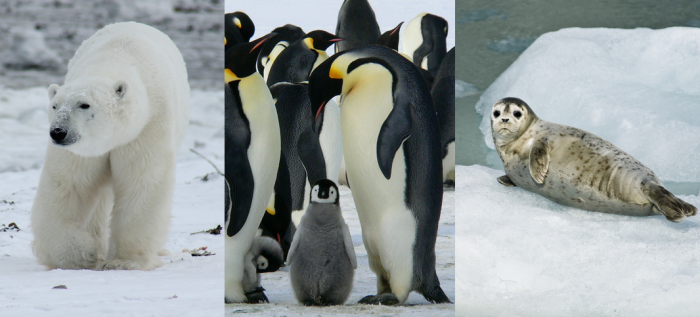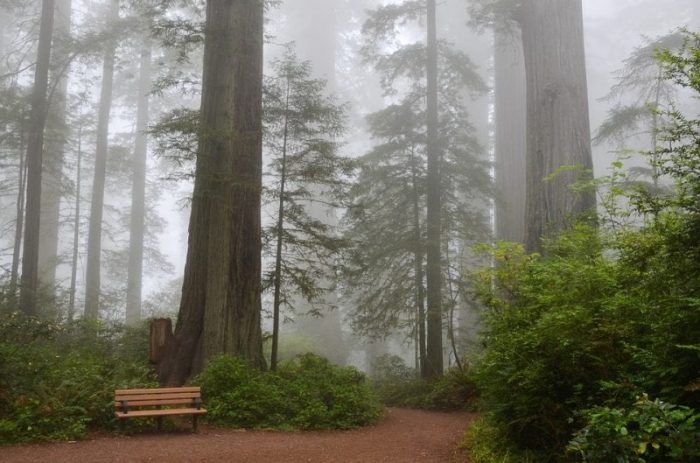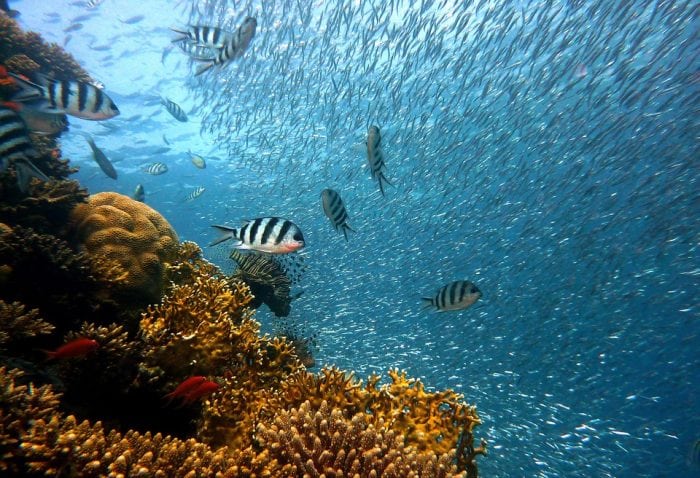
Flora and fauna refer to the plants and animals of an environment. To remember them, fauna sounds similar to fawn, indicating it refers to animals, whereas flora sounds like flowers, indicating it refers to plants.
You may have heard the terms flora and fauna before, but what do they actually mean? Flora and fauna refer to plants and animals in the broadest sense of the words, encompassing pretty much all life on Earth. As you might imagine, these are very broad categories and in general scientists break down the different types of flora and fauna into different classifications, ranging from a specific type of life down to an individual species.
Before we take a look at how scientists divide flora and fauna into different groups, let’s take a look at the terms flora and fauna themselves.
The Terms Flora and Fauna
The term flora refers to the plant life that exists in a particular place at a particular time. This typically includes all indigenous plant life, and the use of flora in this fashion was coined by the French-Swiss botanist and geologist Jules Thurmann. Similarly, fauna refers to animal life that exists in a particular place at a particular time, and the use of fauna in this fashion was codified by Swedish zoologist Carl Linnaeus.
Flora and fauna are umbrella terms that refer to many different types of life. What is counted as flora and fauna is dependant upon the specific region, climate, or time period. A region might be a specific habitat or biome like grasslands or savannas. For this reason, what classifies as a particular group of flora or fauna can be up for debate depending upon how groups of scientists classify a time period or region.
“In all things of nature, there is something of the marvelous.” — Aristotle
Flora can be subdivided into special classifications: native flora, weed flora, and horticultural flora. Native flora obviously refers to the indigenous or native flora in a specific area. Horticultural flora refers to the flora that is cultivated by humans for use, so it refers to agricultural plants. Weed flora is usually used in reference to undesirable plants, those which humans wish to remove from a particular region. This term has somewhat fallen out of favor, as it actually refers to different kinds of plants including invasive species, native species that interfere with agriculture, and weedy species. The term flora can also be used to refer to a publication containing documentation on the plants within a region.
As fauna refers to all the animals in a specific region, the term can also be subdivided into special groups that share some commonality with each other. For instance, the term megafauna is used to distinguish large animals that exist in a particular time and place, with its opposite being microfauna, tiny creatures like protozoans and tardigrades. Infauna are the animals that live at the bottom of a body of water, frequently burying themselves within oceanic sediments. Cryofauna refers to animals that exist in icy regions and habitats, such as Arctic tundra.

Examples of cryofauna (licensed under CC0 via Pixabay)
Examples of Flora and Fauna

Redwoods are examples of indigenous fauna. Photo: USA-Reiseblogger via Pixabay
Turning to some examples of flora and fauna, one example could be the giant redwood trees that are found on the northern coast of California. These trees inhabit a particular region (Northern California) and a particular time (most mature redwoods are between 800 to 1500 years old). The redwood trees are some of the tallest and oldest trees on the planet, and the forest they make up provides homes to a variety of different mammals and insects, examples of fauna.
Another example of flora would be the Welwitschia Mirabilis. The plant is native to the Namid desert, within Angola and Namibia on the southwestern coast of Africa. The plant is characterized by two large leaves which make it resemble a dry or wilted plant, and it, in fact, thrives in dry conditions. Too much water can easily kill it. The plant species inhabit a particular region (Namibia) and is thought to have existed for around 1500-2000 years.

The African Elephant is an example of megafauna. Photo: ajoheyho via Pixabay
Examples of fauna include the Scops Owl and the Blue Pigeon. These birds are native to Seychelles, a series of islands found northeast of Madagascar, off the east coast of Africa. Certain birds like the Seychelles Black Parrot are only found on certain islands, like the island of Praslin in the case of the Black Parrot. These are examples of Avifauna, birds native to a particular region, in this case, Seychelles. Examples of megafauna include the African elephant and the llama. The Woolly Mammoth is an example of an extinct megafauna, living in arctic regions of the globe during the ice age.
It’s important to note that a region doesn’t necessarily have to be large in size, there can be flora and fauna that exist within a fairly small area. The patches of coral that dot the coast coastlines around the world can play host to astonishingly diverse ecosystems of flora and fauna. Coral themselves are animals, yet they are immobile. These coral patches are sometimes known as underwater islands because specific species can only be found around certain coral patches, and they host a wide variety of life such as dolphins, sharks, mollusks, crustaceans, and sponges.

Coral reefs are small areas home to a massive amount of flora and fauna. Photo: joakant via Pixabay
Tropical rainforests are similarly diverse biomes that host a massive amount of flora and fauna. In fact, rainforests might host half of all land-based life on the planet, home to somewhere between 3 to 50 million different species. Temperate forests frequently have only a half dozen or so tree species, but a single hectare of tropical rainforest can be home to more than 480 species of tree. This means that the devastation of rainforests throughout the world threatens a staggering amount of both flora and fauna.
The different types of flora and fauna in a particular region often display similar adaptive functions. For instance, the cryofauna in tundra regions often have thick coats of hair to keep them warm. This is because flora and fauna in a particular region often experience similar environmental pressures that influence the evolution of their species to fit their natural environment. Animals and plants which live in desert biomes have evolved fairly similar ways of dealing with high temperatures and lack of water, such as increased skin area to dissipate heat or the ability to burrow underground, though the exact methods will vary from species to species.
In essence, flora and fauna make up the wide variety of life we see in the world. The flora and fauna in any given region of the world are intertwined through a complex series of relationships and depend on one another as part of the same ecosystem.









